The Other Angle On Five-Axis Machining
Machine complex prismatic parts efficiently on low-cost machining centers. This shop embraces five-axis machining—the kind that features a five-figure price tag.
Share




In many minds, five-axis machining is synonymous with subtle curves. Feed with two rotary axes in addition to the standard three, and the face of a flat end mill can machine a surface that isn't flat itself, but instead free-flowing. Shops producing aircraft structural components have been demonstrating this benefit for years. Even so, there is another angle to five-axis machining. The ability to reorient the tool and/or workpiece in mid-cycle can also let the machine mill, drill and tap many different surfaces of the part, at numerous compound angles, with only one setup required. This isn't complex contouring, it's complex prismatic machining. The cuts themselves may demand only X, Y and Z, but five-axis provides the access.
Now, consider the shop routinely confronted with odd-angle holes or mating surfaces on multifaceted parts, but with little need for complex contouring. Such a shop could easily benefit from five axes. Its only problem would be to justify the cost of a traditional five-axis machine.
But maybe it doesn't have to. A lower-cost alternative is a common vertical machining center—albeit one equipped with a tilting rotary table to permit two axes of indexing. Such an accessory may cost well under $30,000. As a result, even with the base cost of the machine figured in, the combination can deliver five-axis machining with a five-figure price tag.
And many shops do refer to this as five-axis machining. It's just not the "continuous" five-axis capability offered by the higher-end machines. True, this low-cost definition has only three axes actually engaging the part, but the other two are essential to making these traditional axes more profitable.
Mack Tool and Engineering (South Bend, Indiana) is one such shop. The 35-employee company has built a thriving business on machining complex parts using low-cost CNC machines, and rotary tables and other indexers are key to this work. Since the shop was founded ten years ago, accessories for both fourth- and fifth-axis indexing have been used to complete cast parts, by machining critical features located at several different angles per workpiece. Now, Mack Tool is increasingly being asked to take the next step: Machine similar parts from solid blocks of aluminum, so the customer can eliminate casting altogether.
More And More Machining
All eleven of Mack Tool's vertical CNC machining centers use some type of indexer. Three of the machines are equipped with two-axis rotary tables. Each of the others has an added fourth axis, which rotates the work like a rotisserie perpendicular to the spindle.
The machines with tilting rotary tables are used primarily to run housings for aircraft fuel and hydraulic pumps, like the one shown in Figure 1 (at right). The customer for these parts emphasizes delivery and quality, placing both factors ahead of price. Mack Tool machines these parts in batches rarely exceeding 50, holding the work both to demanding delivery schedules, and to inspection characteristics numbering in the hundreds for each pump housing design.
Parts very much like these were the basis of the first contract the shop won, ten years ago. These parts also were the reason why the shop purchased its first machine with a two-axis indexer. Now, that customer accounts for one-third of the shop's business, and the machine and its rotary table are both still used routinely. More recently, the shop purchased machines with tilting rotary tables from Haas Automation (Oxnard, California).
Indexing technology has slowly written the history of how pump housing parts are manufactured. Before CNC indexing—and before Mack Tool—parts like these had to be cast almost completely to their final shape, so machine tools could be used on as few features as possible. Machining was inefficient, because every new machining angle required a new setup. The introduction of quick, precision indexing changed this. Multiple angles no longer multiplied setup time, so a machine tool could economically produce more of the features of a given part.
In fact, the CNC machining cycle for a cast pump housing like the one shown in Figure 1 (above) now includes well over 1,000 indexes. This is a departure from the days when machinists changed workpiece orientation as seldom as possible. Not only have Mack Tool's tilting rotary tables proven themselves easily repeatable enough to index away from critical features and back again, but they also act much faster than any of the machining centers' toolchangers. As a result, Mack Tool's machinists prefer not to limit the motion of the workpiece, but to conserve tool changes instead. For example, if one drill is used at six different angles, then an efficient program has the machine load this drill once, and hit all six holes. This strategy, multiplied by scores of tools in the machining cycle, keeps many of Mack Tool's workpieces changing orientation almost constantly throughout the machining cycle.
Now, Mack Tool's customer aims to have future generations of the pump
housings produced through machining entirely. Though this won't change machining time much, overall leadtime will change dramatically.
Solid Advantage
Almost all pump housing parts still do call for casting, and this leaves Mack Tool with just the last fraction of the total production window. Where it takes fewer than six weeks for a typical five-axis job to move through Mack Tool—including time for outsourced operations like anodizing and pressure testing—it may well have taken the preceding 12 weeks for the same job to move through a foundry. A key reason for this is the limited capacity in qualified foundries, combined with wildly fluctuating demand. This can result in a long backlog when demand is high. And when the job is a new design requiring new tooling for casting, the total casting delay invariably stretches several weeks longer.
Mack Tool's customer has little choice but to stick with this process for its parts that are already in service. The pump housings are incorporated into assemblies that have been, and still are, built into present-day aircraft. How can Boeing—Mack Tool's customer's customer—be asked to change its specification for parts currently in the air?
However, where there is a brand new part that has never been produced before, Mack Tool's customer is eager to explore any changes to the production process that can improve efficiency. The most promising of these is machining from solid. Whether Mack Tool is just finishing a casting or machining the entire part, its own leadtime to process one batch is just about the same. Therefore, machining the part from a solid block of aluminum eliminates 100 percent of the foundry delay. The first new pump housing design to be produced in this way is shown in Figure 2 (at left).
Mack Tool machines this part in four setups. The first stop is a lathe, where the central bore is machined. Then a machining center mills out the shape on the end that resembles an eight-petal flower. A fourth-axis indexer clamps on this flower during the next setup on a machining center, which roughs out the part's vaguely cylindrical form and the features protruding from it. When this step is completed, the part lacks only its most critical features, several holes at various angles, located primarily at the end opposite the flower. To drill and tap these, the part goes to one of the machines with two rotary axes.
Step number three in this process—milling the cylinder using a fourth-axis indexer—illustrates how machining a contoured form doesn't necessarily call for feeding with a rotary axis. This shop machines the profile of the part by interpolating in X and Z from one end of the part to the other. Before the tool enters the material again for each adjacent cut, the indexer turns the workpiece a fraction of a degree. In this way, the machining center mills all the way around the workpiece while it feeds the tool only in the linear axes.
A machine with a tilting rotary table could do the same work. In fact, once that rotary table had the flower to clamp on, it could be used to machine all the rest of the part—an option Mack Tool did consider. The difference is that the two-axis rotary table can clamp on only one end of the workpiece. By contrast, a fourth-axis indexer lets the shop secure the free end with a center, creating a more rigid setup that lets the machine take deeper cuts accurately as it roughs out the cylindrical form. The result is a faster overall production cycle than a machine with two rotary axes would permit by itself, despite the extra setup.
But the new pump housing is not an isolated case. Other parts, too, call for machining from solid, and many of these demand an even greater role for movement in five axes.
Selling Freedom
One such part, shown in Figure 3 (at right), is a pump component that Mack Tool calls the "swirler." This part begins the machining cycle on a CNC lathe, but goes to a machining center to receive features including the 15 curved ridges that radiate from the hub.
The shop's simple NC program for milling out these ridges through X-Y-Z interpolation requires the part to be positioned to compound angles. While one rotary axis holds the workpiece at the appropriate tilt, the other axis indexes from each completed ridge to the site of the next one. In this way, the same set of tool paths repeated 15 times produces all of these features.
And more five-axis work like this is coming. Mack Tool sales engineer Paul Hartz is certain of this. Parts like the swirler and the pump housings, which show what low-cost five-axis machining can accomplish, will help him sell the same service to customers in other industries. "And throughout the years we've been in business, one constant has been a growing demand for rotary-axis work."
It does take time for established designs to change, and time for designers to change their ways of thinking, Mr. Hartz says. However, he expects the freedom provided by five axes to continue to create its own demand. Why is it that most of the designs that come into Mack Tool still place most of the part's features at right angles to one another? "Because machining has traditionally been far more economical for right-angle parts," he says.
However, Mack Tool has the capability to machine with the same efficiency whether the part is orthogonal or not. Aerospace customers have long since come to realize this, and their designs have evolved accordingly
Related Content
5 Tips for Running a Profitable Aerospace Shop
Aerospace machining is a demanding and competitive sector of manufacturing, but this shop demonstrates five ways to find aerospace success.
Read MoreAdditive/Subtractive Hybrid CNC Machine Tools Continue to Make Gains (Includes Video)
The hybrid machine tool is an idea that continues to advance. Two important developments of recent years expand the possibilities for this platform.
Read MoreLean Approach to Automated Machine Tending Delivers Quicker Paths to Success
Almost any shop can automate at least some of its production, even in low-volume, high-mix applications. The key to getting started is finding the simplest solutions that fit your requirements. It helps to work with an automation partner that understands your needs.
Read MoreFryer Milling Machine Provides Fast Setup, Simple Programming
The MB-R toolroom bed mill is reportedly capable of single- or multi-part production with a 0.0002" accuracy.
Read MoreRead Next
Indexers Are Enabling
In this shop's production machining environment, the workforce must be extremely flexible and workholding must be extremely rigid.
Read More5 Rules of Thumb for Buying CNC Machine Tools
Use these tips to carefully plan your machine tool purchases and to avoid regretting your decision later.
Read MoreBuilding Out a Foundation for Student Machinists
Autodesk and Haas have teamed up to produce an introductory course for students that covers the basics of CAD, CAM and CNC while providing them with a portfolio part.
Read More













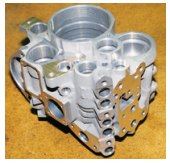
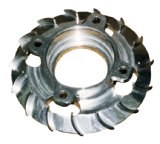
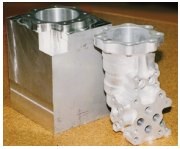
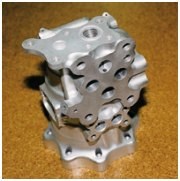












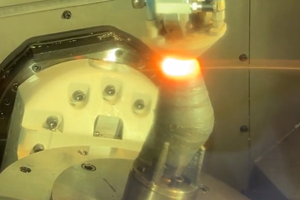


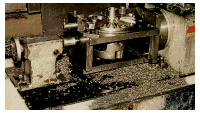


.jpg;maxWidth=970;quality=90)